Helicopter Engine Options – Electric

UN HELICOPTERE ELECTRIQUE… MON DIEU!
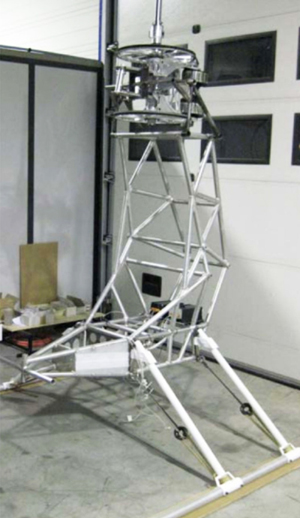
WE ALL know setting a record in a new type of flying machine takes guts, but making the first untethered flight in an electric helicopter was a double test of nerve for French record breaker Pascal Chretien – he thought his self-built machine might explode with it’s Electric Helicopter Engines.
Chretien, a French aerospace engineer and helicopter pilot, along with Solution F, a company specialising in hybrid engines, built the heli with electric motors and onboard batteries.
To keep weight down, he opted to use a type of lithium-ion battery that has high energy density (160 Watt-hours per kg) allied to relatively low weight – but with the payoff that they have a tendency to blow up when damaged.
Chretien said about the potential danger: “The thermal instability of lithium/cobalt chemistry does not leave room for error. It is important to take it slowly. If I crash I stand good chances to end up as a kebab!
“LiPo batteries are notoriously infamous for bursting to flames once distorted. This machine looks like a toy, and flies like a toy, but there is a raging tiger hidden underneath the seat, waiting to bite at the first mistake!”
Chretien built the machine in under a year with little outside help. To keep weight down and simplicity high, he opted for co-axial main rotors – no need for a tail rotor.
And, instead of a standard cyclic, he chose a simple weight-shifting system of handlebars, incorporating the collective – which his is planning to adapt as he continues to improve on his prototype. He also has plans for other changes in the near future.
His flight lasted just 2m 10s and has earned him a place in the history books.

Pascal in his electric helicopter moments before the record attempt
ELECTRIC POWER – A BRIGHT BRAVE SPARK
PASCAL Chreten is a history-maker the first to fly an untethered manned electric helicopter.
Chretien, a French aerospace engineer and helicopter pilot for Solution F, a company specialising in hybrid engines, built the helicopter with electric motors and onboard batteries. Chretien built the Electric Helicopter Engines craft it in under a year with little outside help. His flight test lasted 2m 10s and has earned him a place in the history books.

Chretien knew he had to come up with a unique, lightweight design He opted for co-axial main rotors, negating the need for a tail-rotor. And instead of a standard cyclic, he chose a simple weight-shifting system of handlebars with the electric helicopter engines controls, which incorporates the collective.

Electric helicopter with carbon fibre foot pedals and servo actuators
The batteries are lithium ion polymer pouch cells, with an energy density of 160 watt-hours per kg. Though comparatively lightweight the batteries are considered pretty unstable, and Chreten said: “The thermal instability of lithium cobalt chemistry does not leave room for error.”
It is important to take it slowly. If I crash I stand good chances to end up as a kebab. LiPo batteries are notoriously infamous for bursting to flames once distorted. This machine looks like a toy, and flies like a toy, but there is a raging tiger hidden underneath the seat, waiting to bite at the first mistake!” Blimey’

UK NEWS :: ELECTRIC F1 PLANE COULD COST JUST A FEW POUNDS PER FLIGHT

Rebel Electric Racer – Electric powered F1 aeroplane
IMAGINE a new generation of racing and aerobatics planes that will prepare pilots for top-level competitive flight, but at a cost of only a few pounds per flight AND green enough to stave off the most argumentative ecologist.
This is the Rebel Electric Racer, from composites guru Roger Targett of Targett Aviation, which he hopes will lead to a new low-cost low-C02 race series to boost interest in electric flight.
Roger took the Rebel from imagination to full-size mock-up in just weeks, and saw huge interest after an appearance at the NEC’s Flying Show laste last year.
Since his Show appearance, he has received several serious offers of help and potential investment, from existing industry experts and those from outside aviation but passionate about green power and eco-flight.
Airbus/EADS already have a strong connection with electric flight through ongoing research projects such as the recent French Cri-Cri, and are considering aiding Targett with laser scanning to take the existing mock-up to the CAD stage for development.
Targett created the dummy from his own imagination, first drawing an outline on the floor of his Nympsfield hangar.
Painted and marked with Red Bull star Steve Jones’ livery (Jones has kindly offered to be part of initial flight testing). Scanning the existing model into a PC with perfect accuracy would be a huge help.
Roger is working closely with the Light Aircraft Association, as Britain aims to position itself at the forefront of electric aviation, and says: “The interest since the show has been phenomenal, with lots of people ringing to offer help and advice.
“Aside from those within aviation who know about electric engines, there are many outside who would like to get involved.”
The Rebel has a 20ft wingspan (one-piece, with winglets) and is 17ft long, with Roger aiming for a 195kg empty weight and a 310kg MAUW, meaning 115kg of useful load – no need for heavy avgas in this racer! It will have a ballistic parachute and safety cell as standard, and as a 51% kit or factory-built.
Aeros factors of +/-6G are planned, and all Targett’s expertise in slippery sailplane and gliders is obvious in the speed numbers: cruise will be around 160mph, and the Vne around 220mph. Yuneec’s 60Kw (81hp) electric motor (with controller and li-ion batteries) is under consideration, with other motors being looked at some offering up to 400hp!
“Electric motors are not heavy, and the beauty of batteries is that you can place them where you like to get the ideal C of G,” Roger explained. “There is such an increasing desire for greener energy in all forms of trans port and racing, and also they are very quiet.”
But, Roger says it would also be possible to fit a megaphone system if you wish it to make a particular engine noise for a show – such as a Spitfire.
“As a kit it would be around £25.000, and around £80.000 as a factory-built aircraft including a trailer with solar panels to assist recharging.” Endurance would initially be around 30min, improving as battery tech advances. Targett’s goal is a race series to take place at regular air shows around the UK.
The first flight is hoped to be within a year to 18 months, and investors are being sought.
| Rebel Specifications | |
|---|---|
| WING SPAN | Symmetrical section 20ft (6.1m) one piece, interchangeable tips |
| WING AREA | 51 sq-ft (4.74 sqm) |
| LENGTH | 17ft (5.2m) |
| CONSTRUCTION | UV resistant epoxy pre-preg carbon with honey cell sandwich, safety cell |
| POWER | 60Kw brushless motor, two- or three-blade electric VP Propeller |
| EMPTY WEIGHT | 195Kg (Inc batteries with 30 mins flight duration) |
| MAX WEIGHT | 683lbs (310Kg) |
| AIRFRAME LIMITS | +/- 6G |
| CRUISE SPEED | 160mph (257 km/h) |
| VNE | 220mph (354km/h) |
| SPECIAL FEATURES | Ballistic recovery system fitted as standard; megaphone sound system; helmet display system. Aircraft comes out of the mould and has graphic kit applied – meaning no prep, filling, profiling or painting needed. |
VIDEO: Electric Helicopter Engines: Yuneec Coaxial Electric helicopter
VIDEO: Sikorsky Firefly: An Electric Helicopter





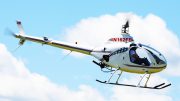
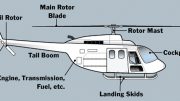
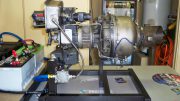
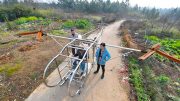
Be the first to comment on "Electric Helicopter Engines"